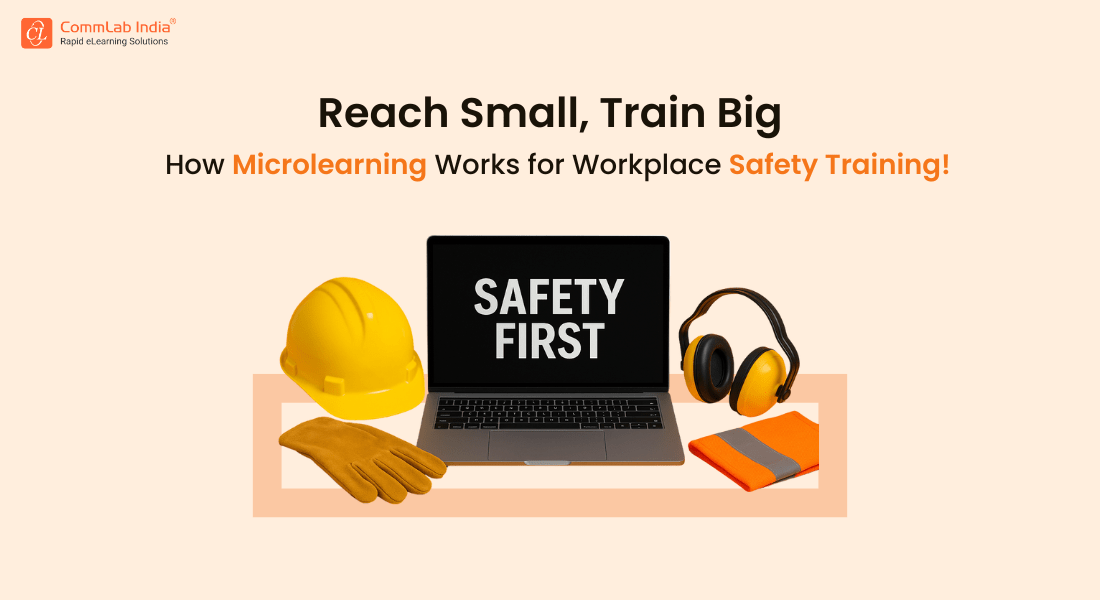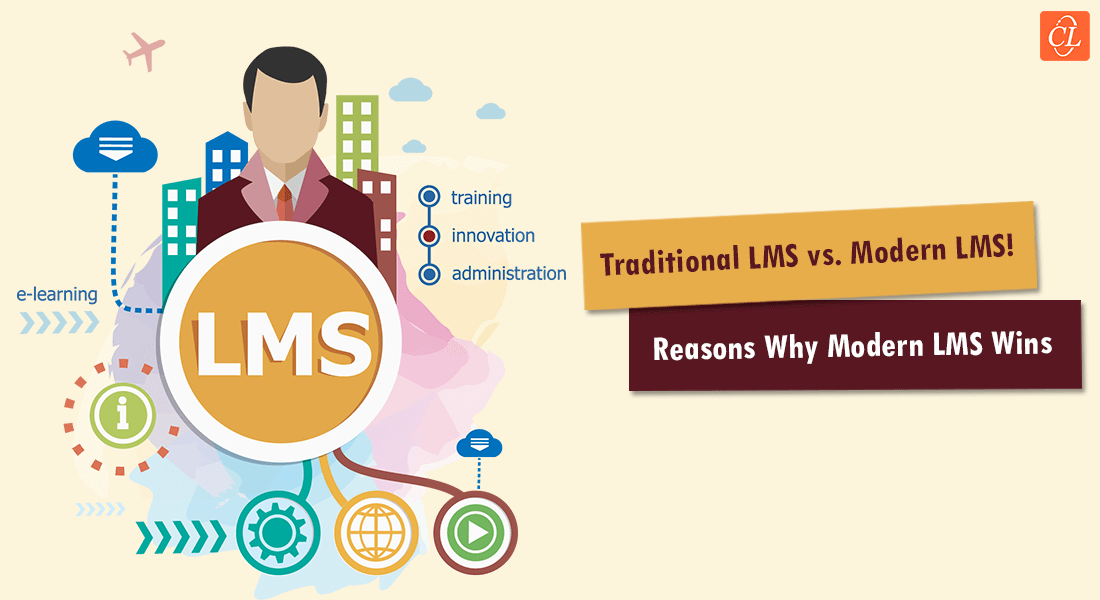5 Microlearning Strategies to Deliver Effective Safety Training

It was John’s first day on the job at a bustling manufacturing plant. Eager to impress, he dove straight into the work, carefully following the instructions he’d been given. But as he moved around the machinery, he unknowingly skipped a critical safety step, something his more experienced coworkers would have spotted immediately. Fortunately, it was only a near-miss this time, but it served as a wake-up call: safety training is essential and overlooking it can have serious consequences.
Staying safe in the workplace isn’t always simple, especially in industries where hazards are everywhere. With dangerous environments, rapidly evolving technology, and changing protocols, it’s clear that safety training isn’t just a one-time event. It’s an ongoing, dynamic process to adapt to new risks.
And when you add new hires like John or team members with different experience levels, ensuring everyone is up to speed can feel like a major challenge. That’s where microlearning solutions come in, quick, focused, and designed to address safety challenges head-on.
Ready to dive in? Let’s make safety training simple, effective, and impactful!
Table Of Content
- Top Microlearning Strategies to Boost Safety Training
- An Implementation Success Story
- The Path to Safer Workplaces with Microlearning
Top Microlearning Strategies to Boost Safety Training
Microlearning Strategies to Supercharge Safety Training
Discover innovative ways to make safety training impactful, engaging, and accessible for every worker, no matter where they are, by:
- Simplifying Complex Safety Topics
- Making Safety Training Accessible with Mobile Learning
- Enhancing Learner Engagement with Gamification
- Simulating Real-World Situations for Hands-On Practice
- Strengthening Knowledge through Reinforcement
1. Bite-Sized Content: Simplifying Complex Safety Topics
Microlearning is all about small, easy-to-digest chunks of information. When it comes to safety training, this approach works wonders. Instead of overwhelming employees with long, dense lessons, break down complex safety topics into short, focused sessions. This makes it easier for them to absorb and actually remember the key points. Think of it like learning in small steps, it’s less intimidating and much more effective!
For instance, instead of delivering a one-hour fire safety training, create microlearning modules focusing on topics like identifying fire hazards, using a fire extinguisher, and evacuation procedures. This approach prevents information overload and allows learners to focus on one critical skill at a time.

Explore this sample microlearning course on fire safety, created in Articulate Rise.
2. Mobile-Friendly Approach: Making Safety Training Accessible for Everyone
Let’s face it—employees are rarely sitting at desks all day, especially in industries where on-site or remote work is the norm. That’s why safety training needs to be mobile-friendly. Deliver training content that’s accessible on phones and tablets, so workers can engage with it no matter where they are—in the field, at home, or on-site. This flexibility means they can learn at their own pace and on their schedule, making the training more effective and less disruptive to their workday. It’s all about meeting employees where they are and empowering them with the tools they need to stay safe.
For instance, a construction company can provide quick safety tips or a step-by-step fall prevention guide via a mobile app, ensuring that workers can review critical information before starting a task.
How Do Microlearning and Mobile Learning Combine for Success?
- Provides learning on-the-go
- Delivers bite-sized, focused content
- Enhances engagement and retention
- Saves time with quick, accessible learning
3. Gamification and Interactive Elements: Enhancing Learner Engagement
Conventional safety training courses can sometimes feel dull and repetitive. That’s where gamification comes in. Add gamification elements to safety training courses to keep employees motivated and engaged. Think quizzes that test knowledge in real-time, leaderboards that spark some friendly competition, or scenario-based challenges that let workers apply what they’ve learned in a practical way. These interactive elements not only keep employees motivated but also help them retain important safety information more effectively. It’s a win-win for everyone!
For example, use a simulation where employees identify workplace hazards in a virtual environment and earn points for correct answers. This not only reinforces learning but also makes the experience enjoyable and competitive.
4. Scenario-Based Learning: Simulating Real-World Situations for Hands-On Practice
One of the best ways to help employees build confidence and skills is through scenario-based learning. Create realistic, bite-sized scenarios that mirror the challenges they’re likely to face in their daily tasks and give them a safe space to practice problem-solving and decision-making. It’s like a dress rehearsal for real-life situations, helping them feel prepared and capable when those moments actually arise.
For example, a warehouse team could go through a short, interactive microlearning module on how to react if a heavy object falls, complete with decision-making prompts and feedback. Scenario-based learning enhances critical thinking and helps employees gain confidence in handling real-world situations.

Check out this sample course featuring real-life scenarios to spot food safety hazards!
5. Frequent Knowledge Refreshers: Strengthening Knowledge through Reinforcement
Microlearning is a fantastic way to keep important knowledge fresh, without overwhelming your team. Microlearning simplifies training by delivering information in small, easily digestible lessons.Periodic refresher courses on safety protocols, delivered in short, focused modules, help reinforce key practices and ensure your team stays sharp over time. It’s a simple, effective way to keep everyone informed and confident in their roles, so leverage microlearning solutions for periodic refresher courses on safety protocols.
For example, a weekly 2-minute interactive quiz or infographic on common safety violations can keep workplace safety top-of-mind without taking up much time. Frequent repetition helps employees retain information long-term and reduces the likelihood of accidents.
By combining these strategies, safety training can become more engaging, accessible, and effective, ensuring that employees stay informed and your workplace remains safe.
Here’s an infographic that shows why microlearning is an ideal pick for refresher training.
An Implementation Success Story
Safety Training for a Manufacturing Major
A leading plant equipment manufacturer leveraged microlearning to revolutionize their evacuation safety training for over 2500 employees. This compelling case study from CommLab India showcases the transformation of a traditional safety training program into a concise, 10-minute interactive microlearning experience. Despite language barriers, with the original inputs in German and no English master course, CommLab India executed a seamless process that involved translations and ensured compliance.
Highlights of the Success Story:
- Innovative Approach: The microlearning course began with engaging icebreaker questions, employed high-impact imagery to illustrate potential accidents, and included original site maps for real-world relevance.
- Interactive Learning: Various interactive elements such as scenarios, drag-and-drop activities, and MCQs were integrated to enhance knowledge retention and active learner participation.
- Robust Process: CommLab India diligently navigated the language challenge by developing a unique process of translating and cross-verifying content, ensuring a flawless final product.
- Client Satisfaction: The client commended the high-quality output and expressed satisfaction with the course's effectiveness in enhancing safety awareness.
Intrigued by this innovative safety training transformation with microlearning? Read the complete case study to explore the full details and insights.
The Path to Safer Workplaces with Microlearning
Ready to transform your safety training? Microlearning makes it easy, effective, and engaging. Say goodbye to boring, drawn-out safety workshops and hello to bite-sized modules on relevant topics. By focusing on short, targeted safety content, you can boost retention and ensure employees have the critical knowledge they need, exactly when they need it.
Want to learn how to create impactful microlearning courses quickly? Or how to use microlearning to achieve bigger organizational goals? Download our free eBook packed with tips, tools, and strategies to get started today!





![How to Enhance Learner Engagement in a VILT Session? [Video]](https://blog.commlabindia.com/hubfs/Imported_Blog_Media/vilt-ways-enhance-learner-engagement-video.jpg)
